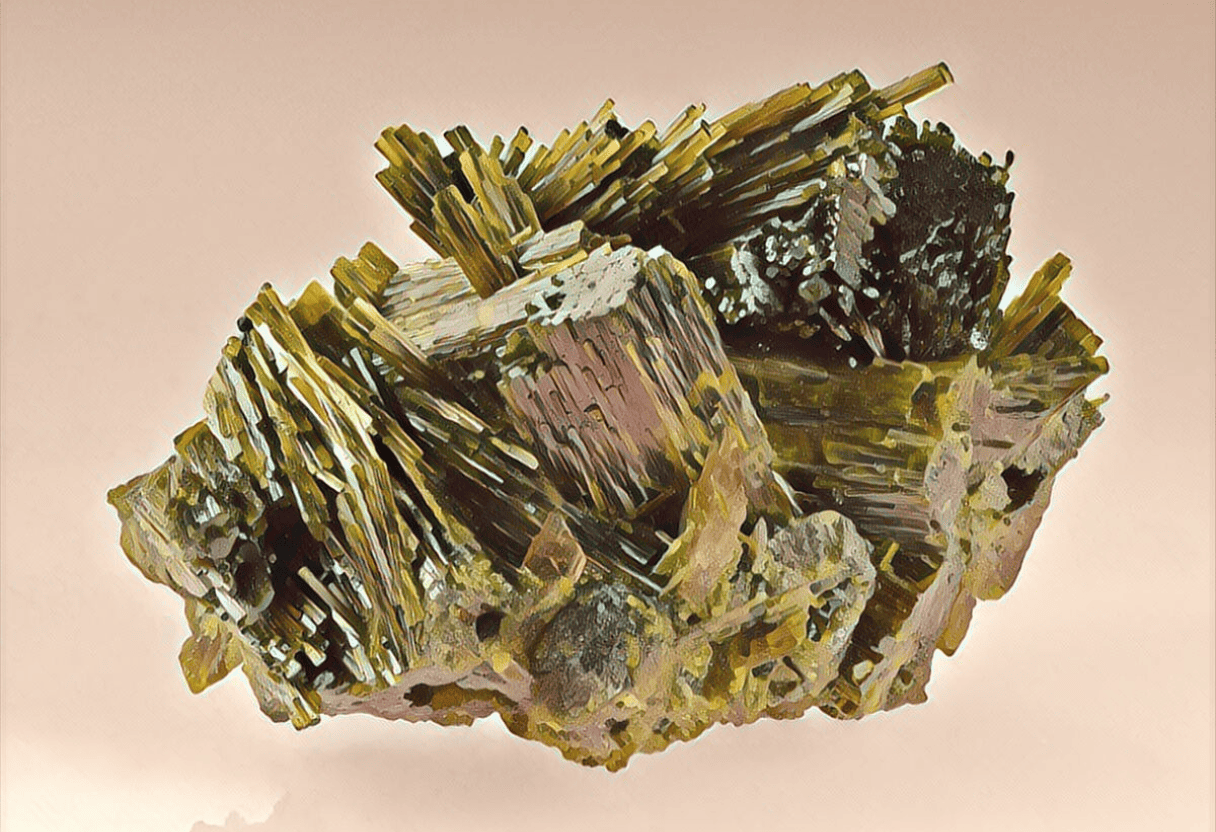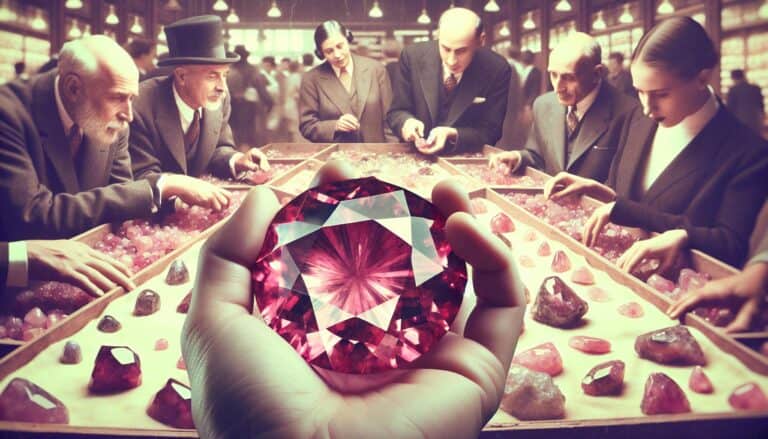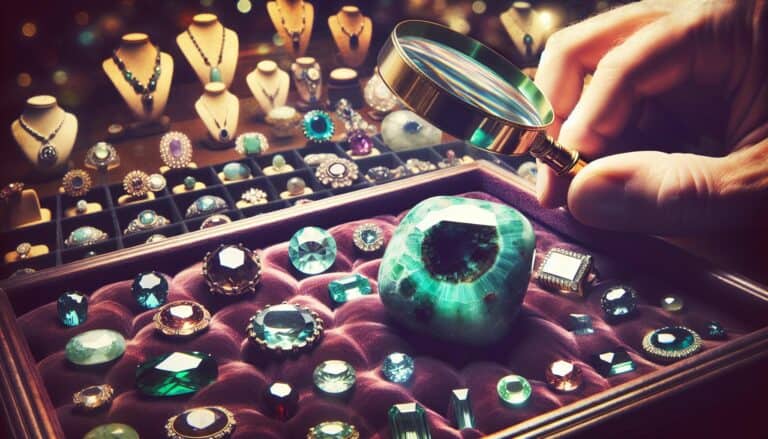Ever wondered about the value of that intriguing green stone called epidote?
I’ve been fascinated by its unique charm and the way it catches the light. If you’re like me, you’re probably curious about how much it’s really worth.
The value of epidote can vary widely, and I’m here to share insights on what influences its price. From its color and clarity to its size and origin, there are several factors that can make all the difference.
Let’s dive into the world of epidote and uncover the mysteries behind its valuation.
Epidote’s value is influenced by its rarity, color, clarity, size, and origin. Its price increases with vibrant green shades, fewer inclusions, larger sizes, and reputable origins. Market demand and treatment also affect its worth. Natural, untreated epidote with a deep green hue and high clarity is most valued.
Factors Affecting the Value of Epidote
When I’m assessing the value of epidote, I always take into account several critical factors. Each of these components plays a role in determining how much epidote is worth on the current market.
Color is one of the most influential aspects. Epidote’s most sought-after hue is a striking green, which often fetches higher prices. However, there are various shades of green ranging from yellowish-green to pistachio, and each has its own unique appeal to collectors and jewelers.
Clarity or transparency is another deciding factor in epidote’s value. Stones with fewer inclusions and higher clarity are more valuable. It’s essential to note that completely clear epidote is quite rare, hence when found, they demand a premium.
The size of the epidote also impacts its worth. Larger specimens, especially those that maintain high clarity and color saturation, are typically more valuable than smaller ones. Buyers should be aware that as the size increases, so too does the price:
| Size Range (carats) | Price Range (USD) |
|---|---|
| 1 – 5 | $50 – $300 |
| 5 – 10 | $300 – $1,000 |
| 10+ | $1,000+ |
The origin of the stone can affect its value as well. Epidote from certain locations, like Austria and Pakistan, can command higher prices due to their known quality and the beauty of the crystals from these regions.
Treatments or enhancements are additional elements to consider. Natural, untreated stones are generally more valuable than those that have been enhanced artificially. Jewelers and collectors often prefer untreated epidote for their authenticity and natural beauty.
Finally, the overall demand for epidote fluctuates, influencing its price. As preferences and trends change in the gemstone market, so too does the desirability and value of this versatile stone. Keeping an eye on market trends can be a good strategy for anyone looking to purchase or sell epidote.
1. Color
When I’m assessing the value of epidote, I pay special attention to its color. This is because color can play a pivotal role in the gemstone’s appeal and, consequently, its market value. Epidote’s most sought-after hue is a striking pistachio green. However, the mineral can also present itself in shades ranging from yellow-green to green-black.
I’ve learned that deeper and more vibrant greens often fetch higher prices in the market, as they are rarer and in greater demand. In the gem world, a well-saturated green with no brown or yellow modifiers is typically considered the ideal.
To give you an idea, I’ve organized some data that highlights the influence of color on epidote’s value:
| Green Quality | Average Price per Carat (USD) |
|---|---|
| Deep Vibrant Green | $100 – $150 |
| Medium Green | $50 – $75 |
| Pale Green | $30 – $50 |
Remember that these prices are average estimates and can vary based on other quality factors. Transparency and the presence of pleochroism, where the stone shows different colors when viewed from different angles, can also amplify a high-quality color’s value.
It’s also essential to take into account the overall rarity of the color variant of epidote. Unique colorations or patterns within the stone can attract collectors and enthusiasts, possibly driving up the price irrespective of the general market preferences. So when I’m evaluating the worth of an epidote specimen, I closely consider both the intensity of its green and its uniqueness.
In essence, color’s impact on epidote’s value is undeniable, and it must be carefully evaluated alongside other attributes before a true value is determined. If you’re keen on owning a piece of this distinctive mineral, researching the market and consulting with a reputable gemologist can help ensure that you’re making a well-informed investment.
2. Clarity
When assessing epidote’s value, clarity is a crucial element I can’t stress enough. Similar to other gemstones, clarity refers to the presence of internal inclusions or external blemishes. High-clarity epidote is more sought after and typically commands a higher price. Stones that exhibit fewer inclusions and display a clean, transparent appearance are considered top-quality. That’s not to say that all inclusions detract from the stone’s value. In some cases, unique inclusions may create distinctive patterns that enhance the gemstone’s aesthetic and uniqueness.
Let’s delve into the grades of clarity for epidote. Gemstones are often graded based on their inclusions, with clarity levels ranging from eye-clean, where no inclusions are visible to the naked eye, to heavily included, which can affect transparency and durability. Epidote, while often found with some degree of inclusions, can reach eye-clean standards, particularly in smaller sizes.
The interesting thing about epidote is that sometimes, the inclusions contribute to the pleochroic nature of the stone, making it display different colors from different angles. This can add to the visual appeal for many collectors.
Here’s a breakdown of how clarity can affect epidote’s price:
| Clarity Grade | Impact on Price |
|---|---|
| Eye-Clean | High — commands premium prices |
| Slightly Included | Moderate — prices are lower but still strong |
| Heavily Included | Low — significantly lower prices due to noticeable inclusions |
My advice? Don’t overlook clarity when considering the purchase of an epidote. Ensure you examine the stone under proper lighting and, if possible, consult with a gemologist to understand the type and impact of inclusions present. Remember, the more transparent the stone, the more I find it to be rare and consequently, the higher the price it can fetch in the market. However, a perfectly clear epidote is exceedingly rare, so a stone with minimal inclusions that don’t detract from its beauty still retains high value.
3. Size
When exploring how much epidote is worth, it’s crucial to consider the size of the stone alongside its color and clarity. In the gem market, size is often measured in carats, and there’s a common misconception that bigger always means more expensive. While larger epidote stones are, indeed, more rare and thus may carry a heftier price tag, it’s the combination of size with high quality that truly ramps up value.
To understand how size impacts pricing, let’s talk about the carat weight system. One carat is equivalent to 0.2 grams, and gemstone prices usually go up as the weight increases. However, the price doesn’t scale up linearly. A 2-carat stone won’t simply be double the price of a 1-carat stone; the increase is exponential—reflecting the rarity of larger, high-quality specimens.
Here is a simple breakdown of how pricing typically scales with size for epidote:
| Carat Range | Expected Price Range |
|---|---|
| 1.0 – 2.0 | Moderate |
| 2.1 – 3.0 | High |
| 3.1 – 5.0 | Significantly Higher |
| 5.0+ | Premiums Applied |
It’s not just the carat weight that matters, though. The cut of the stone can make a smaller epidote appear larger and more impressive, potentially increasing its market value. Expertly cut gems maximize the stone’s brilliance and make the most of its natural beauty.
For collectors and enthusiasts, finding sizable and pleasingly cut epidote can be quite a thrill. It’s important to strike a balance between size and the overall quality of the stone, as a large epidote with poor clarity or an unattractive hue may not be as valuable. To make wise investment decisions or to select a piece that truly resonates with you, consider size as a factor but not in isolation.
4. Origin
The interest in a gemstone’s origin isn’t just for conversation starters or trivia—it’s a crucial factor that can affect its overall value. When it comes to epidote, geographical provenance can significantly sway buyers’ decisions and the final price tag. I’ve found that specimens from certain locations are more highly valued due to unique characteristics associated with those environments.
For instance, epidote from countries like Pakistan, Mali, and Austria often features distinct colorations and inclusions that appeal to collectors and gem enthusiasts. In particular:
- Pakistan is renowned for producing vivid green epidote.
- Mali offers epidote with a distinctive yellow-green hue that’s rare and sought after.
- Austrian epidotes are prized for their crystal clarity and lustrous appeal.
It’s not just a matter of aesthetics; the origin of an epidote also carries implications for its rarity. Mining conditions, accessibility, and the volume of material extracted from a particular region all contribute to how rare—and therefore how valuable—a piece of epidote might be.
Factors to Consider With Origins:
- Rarity of the region: Is the gemstone from a well-known or remote mining location?
- Mining and extraction costs: How does the difficulty of mining in the region influence pricing?
- Market demand for a specific origin: Are buyers willing to pay a premium for stones from a particular place?
Highly-quality pieces from renowned locations can command premium prices. I always advise collectors and investors alike to acquire solid information about an epidote’s origin, as this knowledge can greatly influence the investment potential and desirability of the stone. Remember, the story behind where a piece of epidote comes from adds layers of value, be it historical, cultural, or purely mineralogical.
Determining the Worth of Epidote
When I’m looking at the worth of epidote, I consider more than just its physical attributes. Gemstone valuation is a multifaceted task that involves appraising its historical significance, the market’s current trends, and even the socioeconomic factors tied to its procurement. Not surprisingly, epidote that has a story linked to ancient history or that was part of a famous collection can see its price skyrocket.
Market analysis plays a pivotal role too. Staying informed about the fluctuations in the gemstone market ensures that I can advise on an epidote’s value accurately. For instance, if there’s a surge in popularity for green gemstones, epidote’s price tag might well see a significant increase due to its unique green hues.
I also look at the diffusion of similar products in the market. If other green stones, such as jade or peridot, become abundant and easy to come by, it may drive the value of epidote up as collectors and connoisseurs seek out rarer pieces for their uniqueness.
It’s worth noting that the condition of the stone is always scrutinized. Any signs of treatment, such as dyeing or heat enhancement, can either increase or decrease its value depending on the level of acceptance of such practices within the gemstone community.
When advising buyers or sellers, I suggest obtaining a certified appraisal. A professional evaluation helps in not just understanding the epidote’s worth, but also offers peace of mind when carrying out a transaction whether it’s for insurance purposes or potential resale.
- Historical significance
- Current market trends
- Other market gemstones availability
- Stone condition
- Professionally certified appraisal
Having a deep understanding of these facets gives anyone interested in the value of epidote the edge they need to make informed decisions, whether they’re expanding a collection, seeking an investment or choosing the perfect piece for jewelry design.
Conclusion: Buying & Selling Epidote
Determining the worth of epidote is no small feat. It’s essential to weigh all the factors including rarity, size, color, and clarity alongside historical significance and market trends.
Remember that the condition of the stone and a certified appraisal can greatly influence its value. Armed with this knowledge, you’re now better equipped to navigate the intricacies of epidote valuation.
Whether you’re a collector, investor, or simply curious, you’ll find that understanding these elements is key to making a savvy assessment of an epidote’s true worth.







